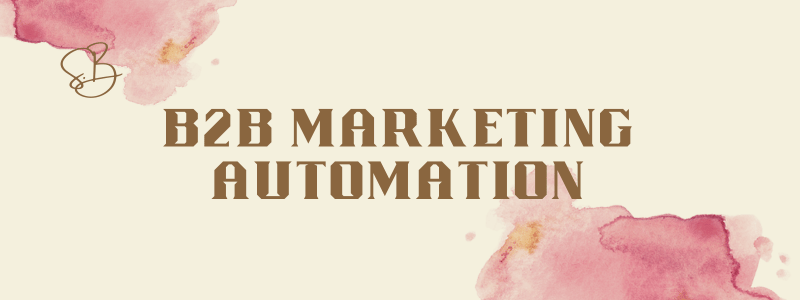In the fast-paced world of B2B marketing, automation has become a game-changer. By streamlining processes, nurturing leads, and driving revenue, B2B marketing automation is no longer optional—it’s essential. Here’s a step-by-step guide to help you implement an effective B2B marketing automation strategy.

1. Define Your Goals
The foundation of a successful marketing automation strategy lies in clarity. Why are you implementing automation? Is it for:
- Lead Nurturing: Building relationships with potential customers.
- Lead Generation: Attracting new prospects to your business.
- Revenue Generation: Driving sales growth.
Identify your primary goal and structure your automation efforts accordingly.
2. Select the Right Tool
Choosing the right marketing automation tool is critical. Keep in mind that B2B tools differ from B2C tools. Look for features tailored to B2B needs, such as account-based marketing, lead scoring, and CRM integration. Your tool should align with your business goals and offer the flexibility to scale as you grow.
3. Segment Your Audience
Audience segmentation is key to targeting the right prospects effectively. Start by categorizing your leads into:
- Cold: New prospects unfamiliar with your business.
- Warm: Leads that have shown interest through actions like website visits or email opens.
- Hot: Highly engaged leads ready to convert.
Segment based on behaviors like clicks, downloads, or website visits to send tailored communication that moves leads through the funnel.
4. Create Lead Magnets
Lead magnets, such as eBooks, whitepapers, or webinars, are crucial for capturing the attention of your target audience. These resources provide value to prospects while helping you identify those genuinely interested in your offerings.
5. Set Lead Capture Forms
To collect leads effectively, create optimized lead capture forms. These forms should integrate seamlessly with your marketing automation platform and CRM, ensuring that leads are categorized and nurtured effectively.
6. Automate Your Email Campaigns
Email automation is the backbone of B2B marketing automation. Use two types of campaigns:
- Bulk Campaigns: Reach a broader audience with general updates or promotions.
- Behavioral Campaigns: Send automated, personalized emails based on user actions, such as downloads or clicks.
Ensure your automation tool is integrated with your CRM to streamline this process.
7. Personalization
Personalization goes beyond using a lead’s name in an email. Advanced personalization involves tailoring messages based on user behavior, preferences, and engagement history. Start simple, and as your data grows, dive deeper into personalized content.
8. Iterate and Improve
Marketing automation is not a one-and-done process. Regularly analyze your campaigns and:
- Conduct A/B testing on emails, landing pages, and CTAs to identify what works best.
- Monitor lead behavior and refine segmentation.
- Align sales and marketing teams to ensure a seamless transition of leads through the pipeline.
Choosing the right marketing automation tool is critical. Keep in mind that B2B tools differ from B2C tools. Look for features tailored to B2B needs, such as account-based marketing, lead scoring, and CRM integration. Your tool should align with your business goals and offer the flexibility to scale as you grow.
Final Thoughts
B2B marketing automation is a dynamic process that requires careful planning and execution. By following these eight steps, you can build a strategy that drives engagement, generates qualified leads, and ultimately increases revenue.



